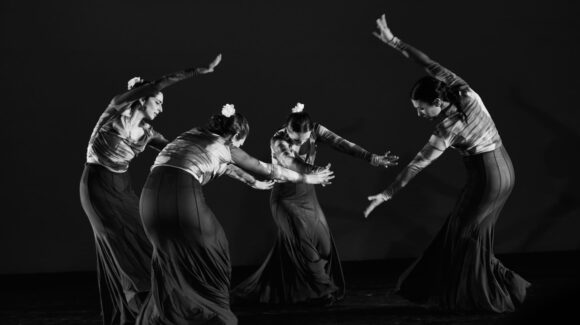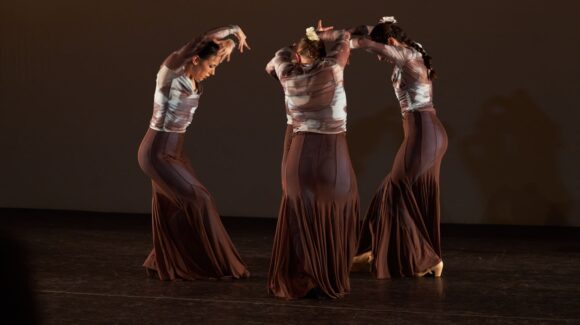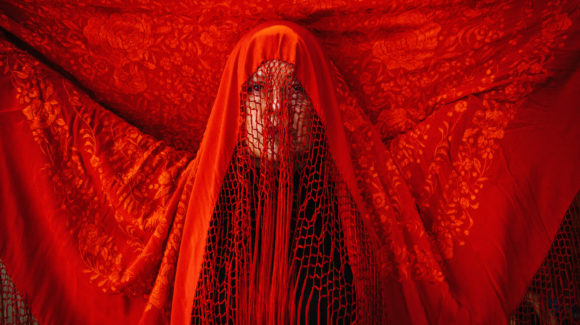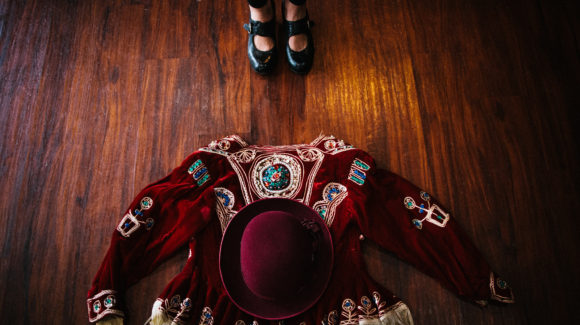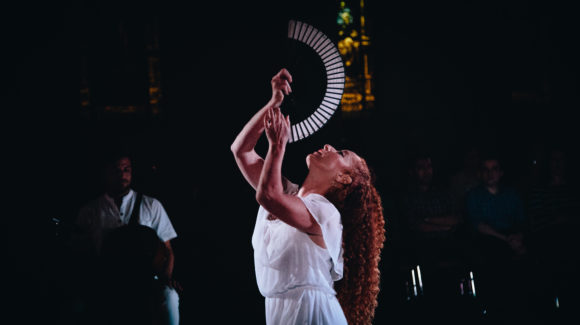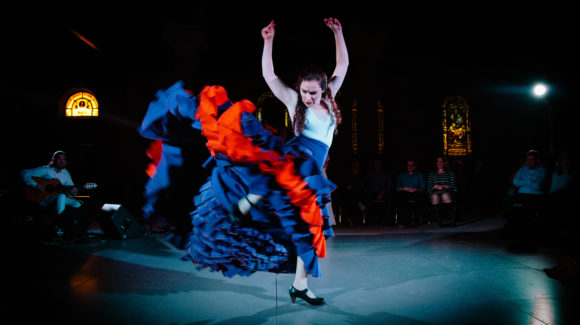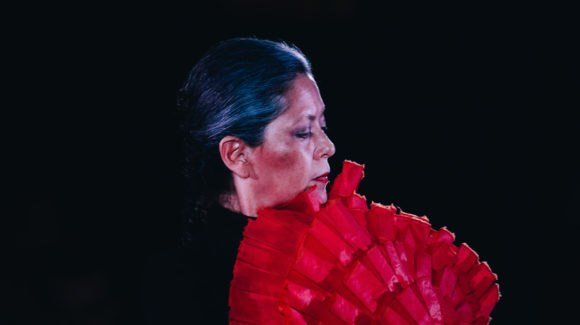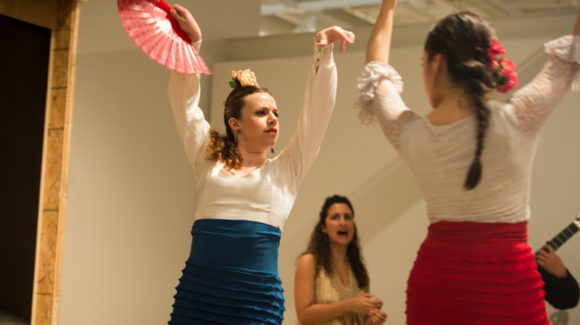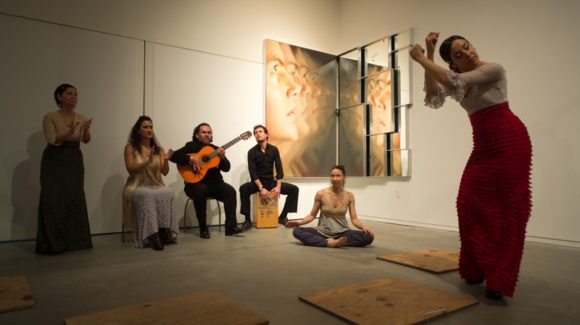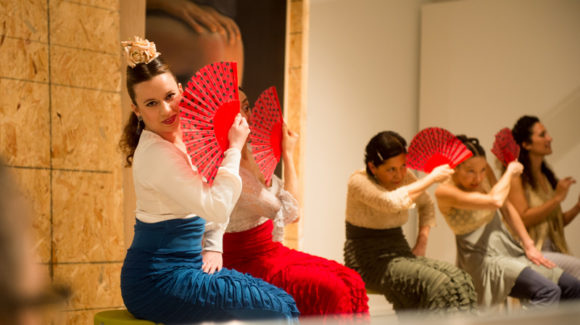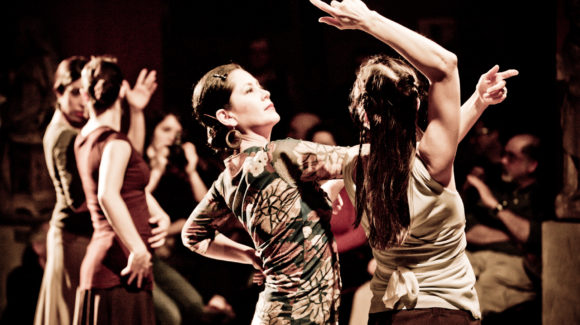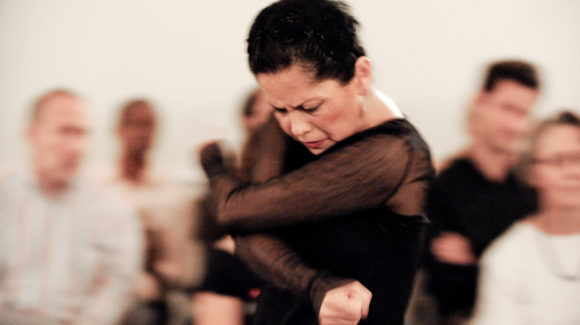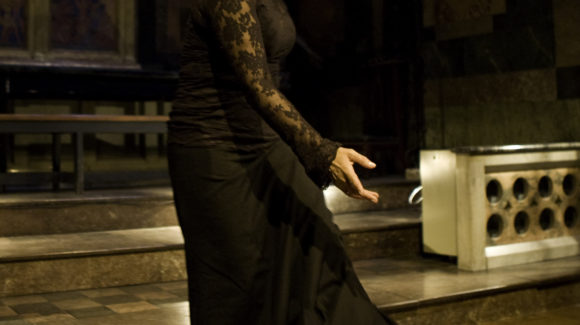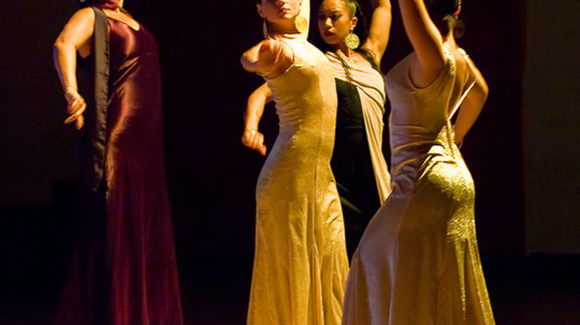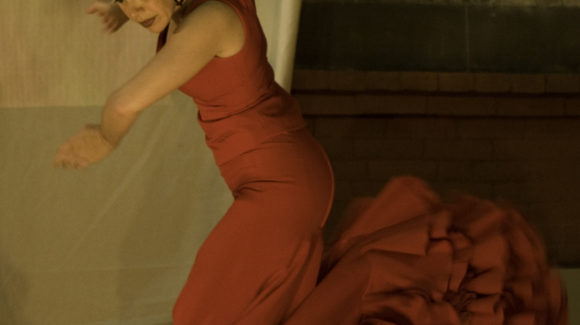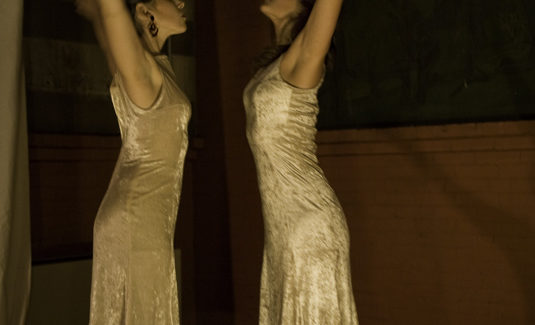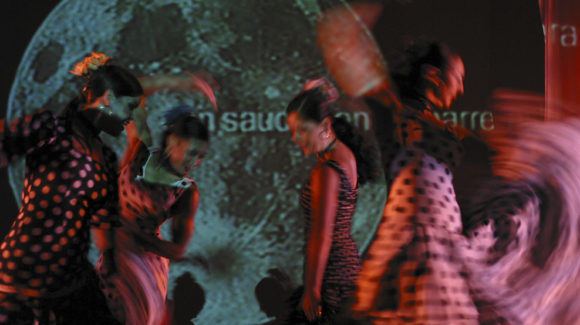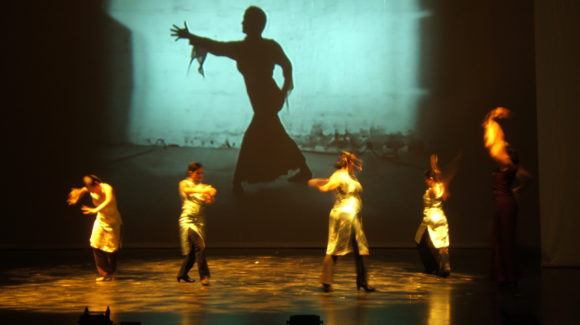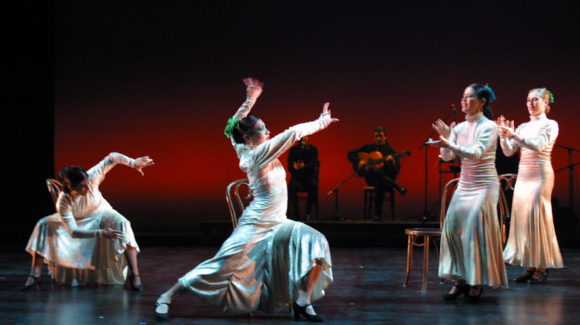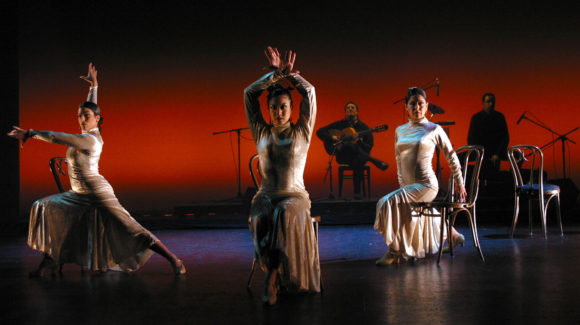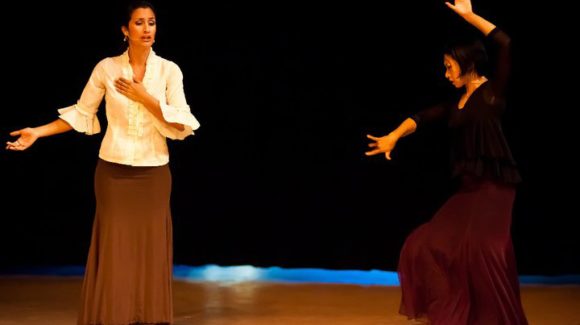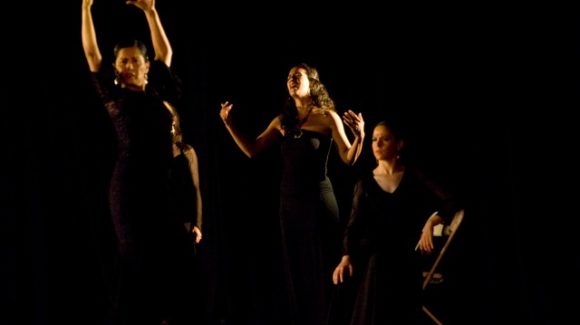Geografia Intima makes inventive use of its spectacular venue […] further transformed by Adal Maldonado’s video landscape. A must-see is the extremely high caliber of its performer and artistic direction.
Works
Hacia La Luz (2024)
Hacia la luz is a dance journey into the many worlds I have inhabited. This work is the culmination of an intensive exploration into my Andean ancestry through extensive travels and studies with gifted Shamans coupled with my lifelong passion and commitment to my beloved flamenco.
After I discovered several years ago that I was of 51% Andean indigenous descent, I immersed myself in the spiritual teachings of Andean Shamanic medicine and rituals. While on this path, I sought out healing modalities that allowed me to connect with the light and dark shadows that I have inherited. My spiritual interests and studies of Andean cosmology have led me to question the paradigms that governed my prevailing notions of reality, identity, creativity, activism, spirituality, race, gender, class, and sexuality. Through the lens of flamenco and my own dance modalities, I hope that Hacia la luz will invite the audience to go on a journey of connection and healing, and to look deeply at the dark shadows we have all inherited. Join me as we bear witness to what haunts us, and we ask ourselves, “How can we repair el daño (the damage)?”
La Bolivianita (2019)
In her new solo performance La Bolivianita, PyA founder and Artistic Director Elba Hevia y Vaca explores her lifelong artistic journey with Flamenco. First introduced to Flamenco through her family’s pride in their Spanish heritage, La Bolivianita delves into the artist’s emotional and changing relationship with her beloved art form. As the artist ages and comes to term with her recent discovery that she is primarily descended from the indigenous Andean rather than the Spaniards, La Bolivianita poses the question: Are we what we inherit? Says Hevia y Vaca, “I have come to realize that Flamenco will always be in my life and that we are inextricably intertwined. The work I’ve made in the past came from a Flamenco body and mind formed by many years of training, conditioning, and obeying rules which I have sought to challenge and decode. Now I’m focusing on embracing these codes and restrictions of Flamenco as elements to use and subvert, rather than as a tyranny to either follow or protest. In my new work, I’m examining this changed relationship while delving into my personal history and identity.”
La Bolivianita incorporates spoken word, the de-construction of modern Flamenco choreography, and culminates in an interactive dialogue with the audience. La Bolivianita is directed by world renowned Flamenco innovator, choreographer, and feminist artist Belen Maya (Spain), and will premiered at the 2019 Fringe Festival.
“…I cannot say that I have ever seen a more powerful and moving exploration of a life in the arts.”—Broad Street Review
Mi Voz/Nuestra Voz (2018)
The history of most women is
Hidden either by silence, or by
flourishes and ornaments that
amount to silence
-Virgina Wolf
Grounded in a rich artistic history, My Voice, our Voice | Mi Voz, Nuestra Voz features the transcendent interplay of flamenco dance and music, side-by-side with debut excerpts of a collaborative work by Pasion y Arte’s artistic director Elba Hevia y Vaca and choreographer Annie Wilson. This work is an exploration between contemporary Flamenco and post modern dance and the effects of trauma on female/dancing bodies – how women embody it, how it changes our bodies, how it makes us move.
Original composition by Andres Arnold.
Cosas de Mujeres/Things of Women (2015)
PyA’s artistic director/choreographer, Elba Hevia y Vaca invites you to her new work Cosas de Mujeres (Things of Women). Set against the large scale paintings of noted Lithuanian design artists Ray Bartkus in the unique landscape of Drexel’s Pearlstein Gallery, this site-specific work explores the possibilities of some of the many feminine objects that are widely used in the Flamenco language manton (shawl), abanico (fan), and bata de cola (long train) and what they mean for contemporary women. How do these objects allow us to explore femininity? Is there room for such femininity in our culture? What does the world see when we embrace that part of ourselves? This work also continues a conversation between post modern and Flamenco with modern dance artist KC Chun-Manning of Flesh Blood, adding a layer of contemporary texture and a fresh look at femininity and what it means for women.
1096 (2013)
Spanning pivotal periods throughout women’s history, “1096” is a collaborative work that ultimately creates a unique dialogue between two diverse dance languages. At its heart, it is an exploratory and feminist conversation between flamenco artist Elba Hevia y Vaca of Pasion y Arte and modern dance artist KC Chun-Manning, of Fresh Blood, and seeks to understand from an artistic and somatic perspective where their two languages meet–and what might be said. The piece not only engages the traditions of two distinct dance forms, but it plays within the conceptual landscape of what we carry over time, treating the body as a time capsule; or, a “body archive.”
Press Release
El Duelo/The Wake (2009-2010)
This piece enters into the inner world of women as they experience the phases of mourning surrounding the death of a shared loved one. Each dancer represents the many phases of mourning such as anger, sadness, rejection, nostalgia and denial. Through the traditions of flamenco and Afro-Cuban music, this work expresses the modern, changing face of Flamenco.
Press Release
Geografia Intima/Intimate Geography (2007-2008)
This piece deconstructs stereotypical impressions of three different historic-religious female archetypes. A journey that explores the boundaries of the flamenco tradition through movement and non-traditional flamenco music. The visual landscape incorporates original footage of multiple close-up images of the three women dancing. This set invites the viewer into the intimate space of each woman and creates a dialogue with the viewer. The women dance in dialogue with the projected versions of themselves and with each other, moving in and out of each other’s mirrors, space, and time.
Press Release
La Luna de Par en Par/The Moon Wide Open (2005-2006)
Conceptually, this trilogy explores the female psyche through our experience of dance.
It represents the woman’s journey:
Part I – Loss of Innocence-Awareness
Part II – Duality-Masculinity
Part III – Evolution-Woman
Each section of the trilogy has a theme and consequent choice of choreography, cast, music, video set, and costume. This piece is firmly rooted in flamenco traditions, but introduces multi-disciplinary elements through various musical genres, cross-disciplinary choreography, and video images that create a visual landscape and set.
El Cuerpo Recuerda/The Body Remembers (2003-2004)
“The Body Remembers” features six female dancers of multi-cultural and multi-generational backgrounds who use the language of flamenco to investigate the shared collective experience stored in their bodies as historical memories. Choreographically, this work explores Hevia y Vaca’s continued interest in using contemporary forms of dance along with traditional flamenco styles.
Pasión y Arte is the right name for this intense, dramatic, all-female ensemble. […] Although they use traditional forms (farruca, siguiriyas, alegrías), they’re a neo-flamenco group, creating contemporary innovations in the formal choreography and music. They personified modernity in a short interlude. […] Staging, choreography, timing and sense of drama were impeccable throughout.
Brenda Dixon Gottschild
Dance MagazinePoder de Una Mujer / Power of Her Being (2002-2003)
Rooted in the flamenco art form’s cante (deep song), toque (guitar), and baile (dance), this work nevertheless challenges tradition through its choreography and staging. It is a thorough exploration of women’s differences and how these differences have the ability to unite rather than divide. Its choreography explores a new vocabulary by using rigid, primal, instinctual references and an aggressive demeanor, which creates an uncharacteristic aesthetic for women in flamenco. This collaboration with artist Adál Maldonado incorporated a visual landscape for this work that further expands the environment.


